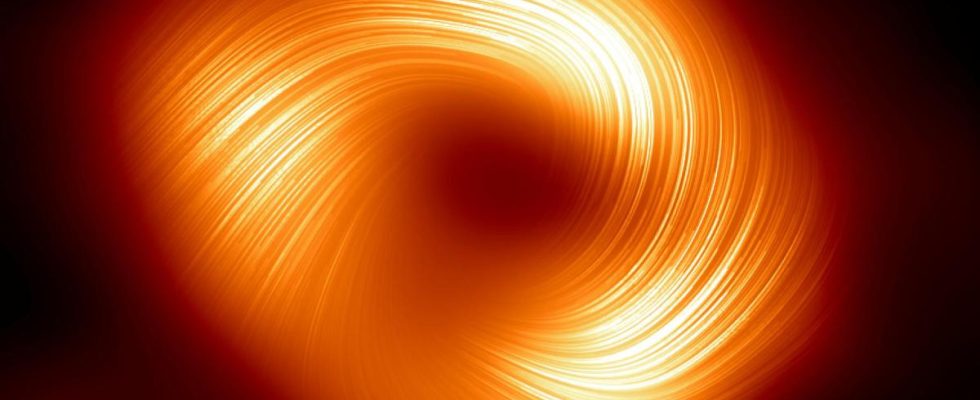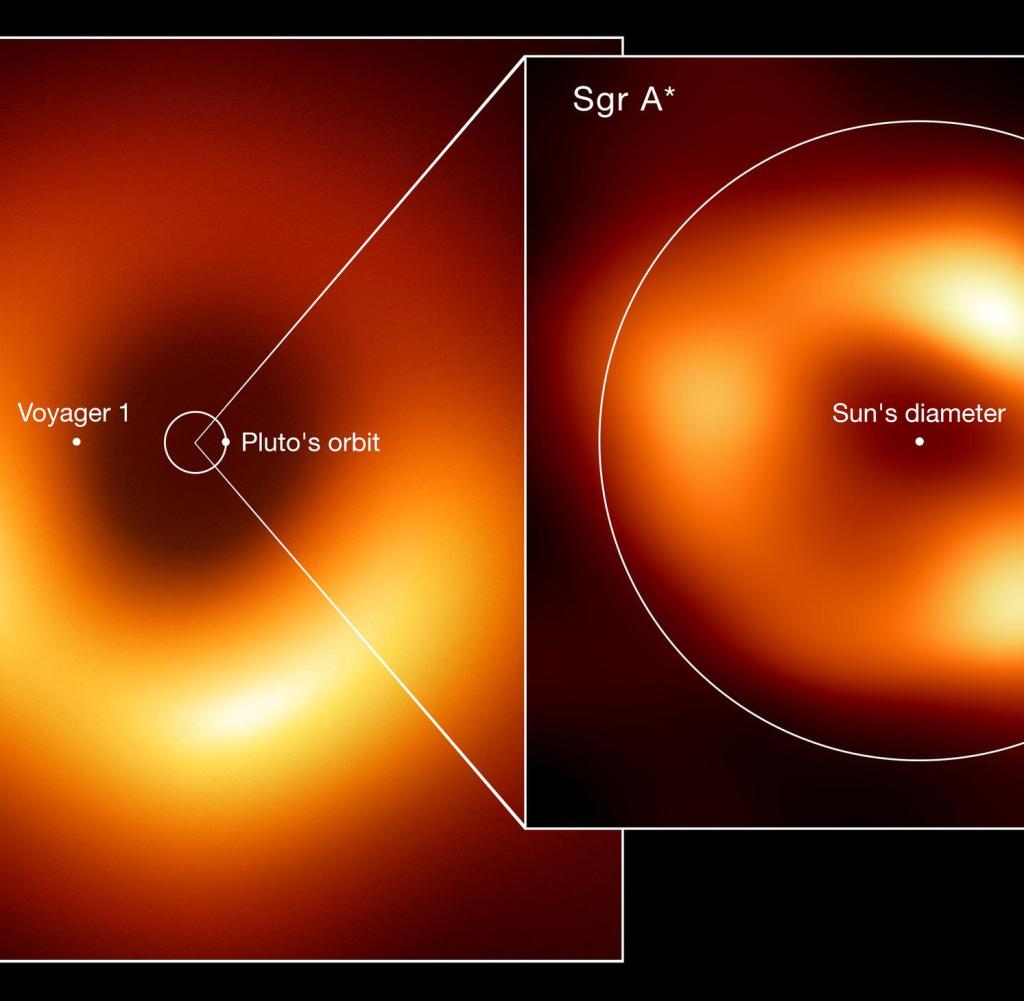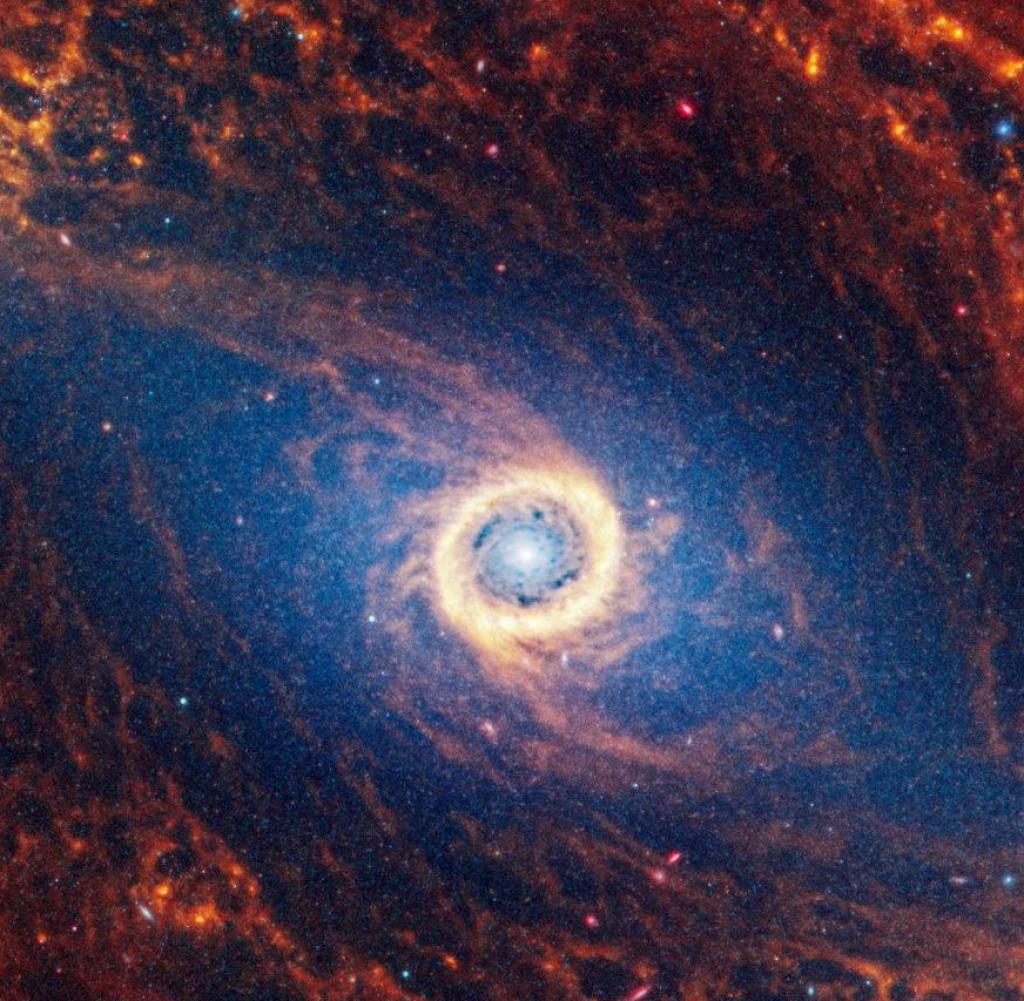Ordered magnetic field in the center of the Milky Way

The magnetic fields rotate in a spiral around the central shadow of the black hole
Source: EHT Collaboration
The Event Horizon Telescope, which consists of a total of eight telescopes distributed around the world, has detected a strong, ordered magnetic field around the black hole in the heart of our home galaxy. This has great similarities to the black hole in the galaxy M87.
vA strong, ordered magnetic field emanates from the large black hole at the center of our Milky Way. This is shown by observations with the “Event Horizon Telescope” (EHT), a network of eight radio telescope systems distributed around the world. The structure of this magnetic field is surprisingly similar to that of the supermassive black hole in the galaxy M87, scientists from the EHT team report in two articles in the journal “Astrophysical Journal Letters“.
“By observing polarized radiation from the hot, glowing gas around black holes, we can determine the structure and strength of a magnetic field present there,” explains Angelo Ricarte from the Harvard Smithsonian Center for Astrophysics in the USA, one of the lead scientists the EHT collaboration. Light and radio radiation are oscillations of electric and magnetic fields. With polarized radiation, these fields do not oscillate randomly, but in a specific, fixed direction
Size comparison of the two black holes: M87*, in the galaxy Messier 87, and Sagittarius, in the Milky Way
Source: EHT collaboration
A global map shows the radio observatories that make up the EHT network
Source: ESO/M. grain knife
The radio radiation measured by astronomers is caused by the movement of electrically charged particles. Magnetic fields influence this movement – and an ordered magnetic field therefore leads to polarized radiation. “So we can see from the radiation that there is a strong magnetic field near the black hole in the center of the Milky Way,” says Sara Issaoun from the EHT team, also from the Harvard Smithsonian Center for Astrophysics. “And we also see that this magnetic field is similar to that of the much larger black hole in M87.”
That from the astronomers Sagittarius A* The so-called black hole at the heart of the Milky Way is 27,000 light-years from Earth and contains about four million times the mass of the Sun. The black hole at the center of the galaxy M87, 55 million light-years away, contains 6.6 billion solar masses. “Strong, ordered magnetic fields – regardless of mass – appear to be characteristic of black holes,” concludes Mariafelicia De Laurentis from the University of Naples in Italy.
Sagittarius A* under observation
Presumably the magnetic fields regulate the flow of gas from the surroundings onto the black hole. What’s more, not all of the gas flowing towards the black hole actually falls into it. Part of the gas is deflected by the magnetic field and, bundled into a narrow jet of matter, shoots thousands of light years out into space. Astronomers see such “jets” in many supermassive black holes in distant galaxies, including M87.
However, researchers have not yet been able to detect any jets of matter in the central black hole in our Milky Way. But the similarity of the magnetic fields at M87 and Sagittarius A* suggests that such jets also exist here, says De Laurentis: “We just have to find them.” That could happen soon, as the EHT Sagittarius A* is scheduled to arrive in April. observe again.
And observations with the global network of telescopes are getting better and better: new telescopes are being added, improvements in technology make it possible to cover a larger range of frequencies and increase the sensitivity of the receivers. “By observing polarized radiation,” says Ricarte, “we can learn an enormous amount about the physics of black holes, about the properties of the gas in the environment and about the way it flows into the black hole.”





